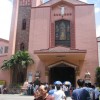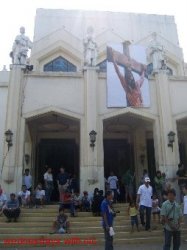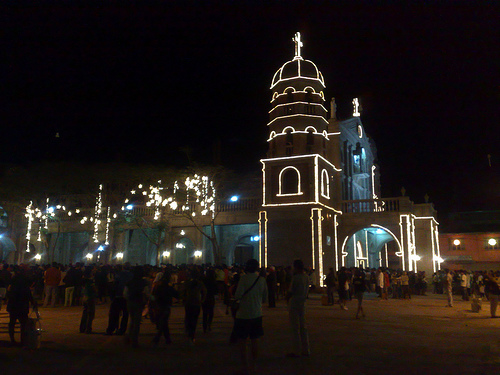How different are the kids of today from those born three to six decades ago?
Well, here is one take of such differences as shared to me via email my a college friend Jose Yparaguirre.
TO ALL THE KIDS WHO WERE BORN IN THE 1950's, 60' s,70's and early 80's !!
First, some of us survived being born to mothers who did not have an OB-Gyne and drank San Miguel Beer while they carried us.
While pregnant, they took cold or cough medicine, ate isaw, and didn't worry about diabetes.
Then after all that trauma, our baby cribs were made of hard wood covered with lead-based paints, pati na yung walker natin, matigas na kahoy din at wala pang gulong. We had no soft cushy cribs that play music, no disposable diapers (lampin lang), and when we rode our bikes, we had no helmets, no knee-pads , sometimes wala pang preno yung bisikleta.
As children, we would ride in hot un-airconditioned buses with wooden seats, or cars with no air-conditioning & no seat belts (ngayon lahat may aircon na).
Riding on the back of a carabao on a breezy summer day was considered a treat.(ngayon hindi na nakakakita ng kalabaw ang mga bata)
We drank water from the garden hose and NOT from a bottle purchased from a convenience store (minsan straight from the faucet or poso).
We shared one soft drink bottle with four of our friends, and NO ONE actually died from this.
We ate rice with star margarine, drank raw eggs straight from the shell, and drank sofdrinks with real sugar in it (hindi diet coke), but we weren't sick or overweight kasi nga……
WE WERE ALWAYS OUTSIDE PLAYING!!!
We would leave home in the morning and play all day, and get back when the streetlights came on. Sarap mag patintero, tumbang preso, habulan at taguan.
No one was able to reach us all day ( di uso ang cellphone , walang beepers). And yes, we were O.K.
We would spend hours building our wooden trolleys (yung bearing ang gulong) or plywood slides out of scraps and then ride down the street, only to find out we forgot the brakes! After hitting the sidewalk or falling into a canal (seweage channel) a few times, we learned to solve the problem ourselves with our bare & dirty hands.
We did not have Playstations, Nintendo's, X-boxes, no video games at all, no 100 channels on cable, no DVD movies, no surround stereo, no IPOD's, no cellphones, no computers, no Internet, no chat rooms, and no Friendsters or Facebook…….WE HAD REAL FRIENDS and we went outside to actually talk and play with them!
We fell out of trees, got cut, broke bones, lost some teeth and there were no stupid lawsuits from these accidents. The only rubbing we get is from our friends with the words..masakit ba? pero pag galit yung kalaro mo,,,,ang sasabihin sa iyo.. beh buti nga!
We played marbles (jolens) in the dirt , washed our hands just a little and ate dirty ice cream & fish balls. we were not afraid of getting germs in our stomachs.
We had to live with homemade guns " gawa sa kahoy, tinali ng rubberband , sumpit , tirador at kung ano ano pa na puedeng makasakitan. pero masaya pa rin ang lahat.
We made up games with sticks (syatong), and cans (tumbang preso) and although we were told they were dangerous, wala naman tayong binulag o napatay. Paminsan minsan may nabubukulan lang. We walked, rode bikes, or took tricycles to a friend's house and knocked on the door or rang the bell, or just yelled for them to jump out the window!
Mini basketball teams had tryouts and not everyone made the team. Those who didn't pass had to learn to deal with the disappointment. Wala yang mga childhood depression at damaged self esteem ek-ek na yan. Ang pikon, talo!
Ang parents ay nandoon lang para tignan kung ayos lang ang mga bata, hindi para makialam at makipag-away sa ibang parents.
That generation of ours has produced some of the best risk-takers, problem solvers, creative thinkers and successful professionals ever! They are the CEO's, Lawyers, Engineers, Doctors and Military Generals of today.
The past 50 years have been an explosion of innovation and new ideas. We had failure, success, and responsibility. We learned from our mistakes the hard way.
You might want to share this with others who've had the luck to grow up as REAL KIDS. We were lucky indeed. And if you like, forward it to your kids too, so they will know how brave their parents were.









